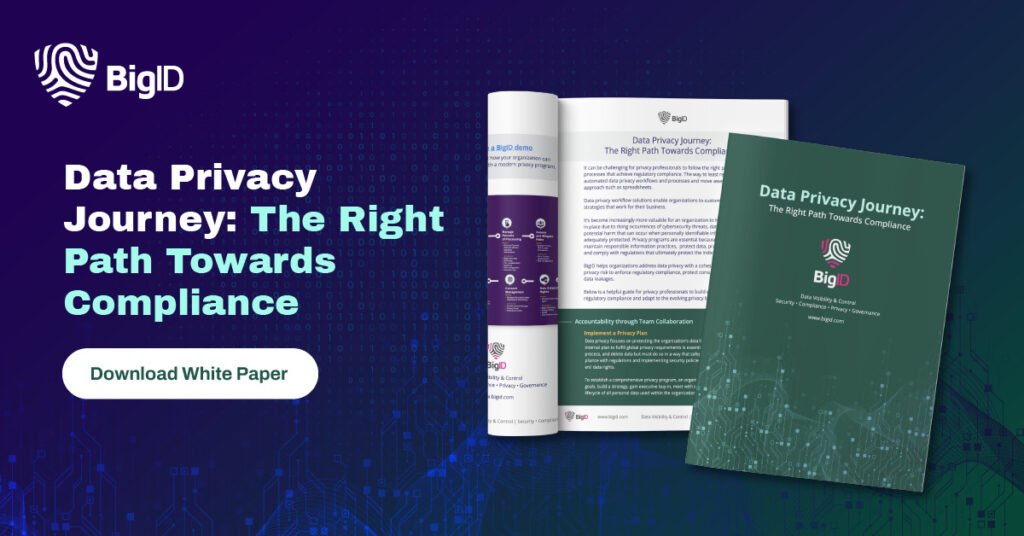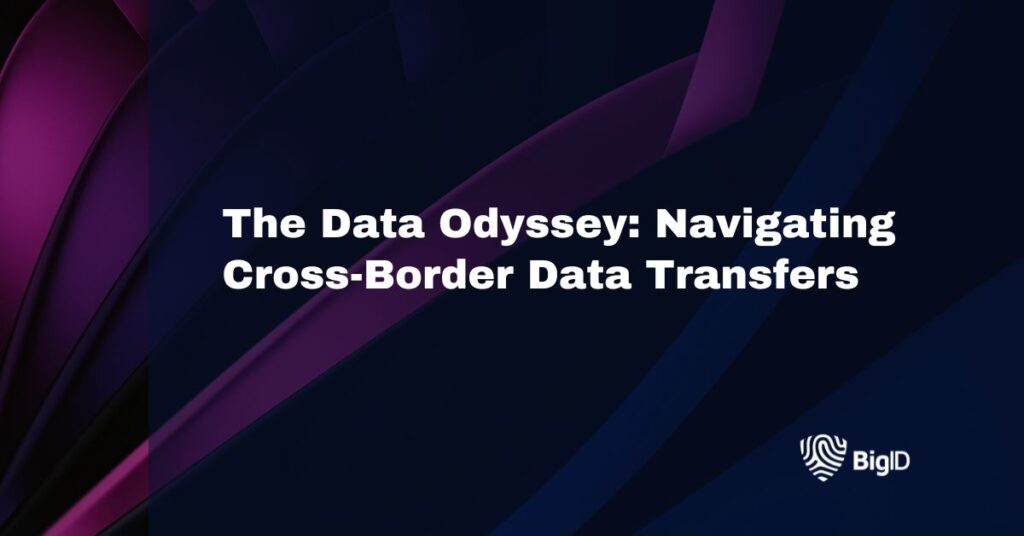In the epic Greek poem “The Odyssey,” there is a famous quote that states, “And now, tell me and tell me true. Where have you been wandering, and in what countries have you traveled?”. So ironically, it’s now a question for organizations regarding data transferred across borders.
In this globalized economy, cross-border data transfers have become essential to many businesses. Cross-border data transfers refer to the movement of data from one country to another, often for business purposes. However, with increased data breaches and privacy concerns, governments worldwide are implementing specific requirements in laws and regulations to control cross-border data transfers.
Legal Frameworks & Privacy Requirements
Cross-border data transfers are subject to various legal frameworks, depending on the countries involved and the type of data transferred. The most common data privacy regulations and frameworks on data transfers are:
- The General Data Protection Regulation (GDPR) of the European Union (EU): The GDPR sets strict rules for transferring personal data outside the EU. Such transfers are only allowed if the recipient country has adequate data protection laws or if the transfer is subject to appropriate safeguards such as standard contractual clauses or binding corporate rules.
- The California Consumer Privacy Act (CCPA) of the United States: The CCPA requires businesses to disclose the categories of personal information collected, sold, or shared with third-parties, including those located outside the US. Companies must also provide a mechanism for California residents to opt-out of such transfers.
- The Asia-Pacific Economic Cooperation (APEC) Privacy Framework: The APEC framework provides a set of principles for cross-border data transfers, including notice, choice, accountability, security, and access. APEC member countries can participate in a voluntary accountability program to demonstrate compliance with these principles.
Challenges of Cross-Border Data Transfers
Data privacy professionals face several common challenges when managing cross-border data transfers, intra-data and third-party data sharing, including:
- Compliance: Different countries have different laws and regulations on data protection, making it challenging to ensure compliance when transferring data across borders.
- Cybersecurity Risks: Cross-border data transfers can increase the risk of cyber-attacks and data breaches, especially if the data is being transferred through third-party providers or cloud services.
- Cultural Barriers: Cultural and linguistic differences between countries can make communicating effectively during cross-border data transfers difficult.
- Technical Issues: Cross-border data transfers can be complicated by differences in technical standards, connectivity issues, and other technical challenges.
- Lack of transparency: In some cases, it may be difficult to track the movement of data across borders, which can create issues related to transparency and accountability.
- Political and economic considerations: Cross-border data transfers can be affected by political and economic factors, such as trade agreements, sanctions, and political tensions between countries.

Benefits of Cross-Border Data Transfers
Despite the challenges, there are several benefits of cross-border data transfers. These include:
- Global Business Operations: Cross-border data transfers enable businesses to expand their operations globally, helping them reach a broader market.
- Cost Efficiency: Transferring data across borders is often more cost-effective than setting up local data storage facilities.
- Cost savings: Cross-border data transfers can help businesses reduce costs by sharing resources and infrastructure across borders.
- Collaborative Work: Cross-border data transfers enable businesses to collaborate with partners and employees in different countries.
- Improved efficiency: Cross-border data transfer allows for efficient data sharing between businesses, governments, and individuals, leading to better decision-making and faster response times.
- Increased innovation: By sharing data across borders, businesses and individuals can access a wider range of information, ideas, and insights. This can lead to increased innovation and new growth opportunities.
- Better customer service: Cross-border data transfer can help businesses better understand their customers’ needs and preferences, allowing them to provide more personalized and effective customer service.
- Economic growth: Cross-border data transfer can contribute to economic growth by creating new business opportunities and increasing productivity.
Solutions to Achieve Compliance with Data Transfers
Overall, the best solution for cross-border data transfer depends on the specific circumstances of the transfer, including the countries involved, the type of data being transferred, and the purpose of the transfer. To achieve and maintain compliance, organizations must implement several solutions. These include:
- Data Mapping: Organizations should understand the data they process and identify the types of data transferred across borders. It will help to identify the risks associated with cross-border data transfers and implement appropriate security measures.
- Binding Corporate Rules (BCRs): BCRs are internal rules that multinational organizations can establish to govern the transfer of personal data between their different subsidiaries. These rules ensure that data is protected to a specific standard, regardless of the location of the data.
- Data Protection Agreements: Businesses should have a data protection agreement in place with their data processors or cloud service providers. The contract should outline the parties’ obligations to ensure compliance with data protection regulations.
- Data Encryption: Businesses should use encryption to protect data during cross-border transfers. Encryption helps to ensure the confidentiality and integrity of data, reducing the risk of data breaches.
- Data localization: Data localization involves keeping data within the jurisdiction where it was collected. While this approach can help ensure data protection, it can also create challenges for businesses that operate in multiple countries.
- Data anonymization: Data anonymization involves removing all identifiers from data so it’s not linked back to an individual. This can help protect privacy during transfer and analysis.
- Adequate Safeguards: Businesses should implement proper safeguards to ensure compliance with data protection regulations. These include data protection impact assessments, privacy notices, and appropriate security measures.
- Privacy Shield Framework: For transfers of personal data from the EU to the US, businesses can rely on the Privacy Shield Framework, a self-certification program that enables US companies to meet EU data protection requirements.
How BigID Helps with Cross-Border Data Transfers
Cross-border data transfers are essential for businesses to operate globally. However, compliance with data protection regulations can be challenging, and businesses must implement appropriate solutions. Organizations must take a proactive approach to govern the transfer of personal data to avoid hefty fines from several regions and achieve compliance.
BigID helps organizations identify, manage, and monitor all personal and sensitive data activity – including cross-border data transfers. With BigID, organizations can:
- Build an accurate data inventory to assign residency to data sources & individual’s data
- Tag and label data based on the residency of data subjects
- Monitor & alert on cross-border transfers and third-party data sharing with OOTB policies
- Manage data flows across multiple jurisdictions to enforce data residency requirements
- Easily detect out-of-policy cross-border data transfers to reduce risk
- Send assessments to a third-parties to monitor risk and remediate cross-border transfer violations
- Ensure compliance with CCPA, GDPR, PIPL, LGPD, and many more data regulations.
Companies must ensure the security of cross-border data transfers while reaping the benefits of global business operations. So when data goes on that “Odyssey,” it’s within compliance. Schedule a BigID demo to learn more about how we can help you with your cross-border data journey.

